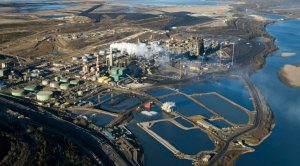 They not only create wealth and jobs but are a stellar example of innovation by Canadian companies, writes Philip Cross in the Financial Post. Below is an excerpt from the article which can be read in full here.
They not only create wealth and jobs but are a stellar example of innovation by Canadian companies, writes Philip Cross in the Financial Post. Below is an excerpt from the article which can be read in full here.
By Philip Cross, April 30, 2021
The Macdonald-Laurier Institute has just released a paper of mine on the oil sands and Canada’s economy. Many Canadians outside the prairie provinces have trouble understanding — or accepting — that Alberta’s oil sands are still enormously important to our economy. The $8.3 billion of new investment in the oil sands last year represented 4.5 per cent of all Canada’s business investment in 2020 and was four times the capital spending undertaken by the auto manufacturers whom eastern-Canadian politicians continue to lionize and subsidize.
The oil sands now dominate Canada’s crude oil production, with 70 per cent of total output, and the recent investments mean production will continue to grow. Most is destined for the U.S. market. While U.S. oil imports have fallen sharply as domestic shale-oil output has expanded, demand for Canadian oil has risen steadily because of declining supplies of heavy oil from Mexico and Venezuela, as well as the lower price Americans pay for our oil.
Oil sands production and investment have different impacts on Canada’s economy. The overall effect on GDP is about the same but increased investment creates more jobs in both Alberta and the rest of Canada in the short term. Higher production creates fewer jobs because producing bitumen does not require much labour. On the other hand, these jobs pay more and are stable over the long term. The stability of oil sands operations was displayed during the pandemic, as employment in oil and gas extraction fell only 0.9 per cent, compared with a 17 per cent drop in drilling and exploration operations.
***TO READ THE FULL ARTICLE, VISIT THE FINANCIAL POST HERE***




